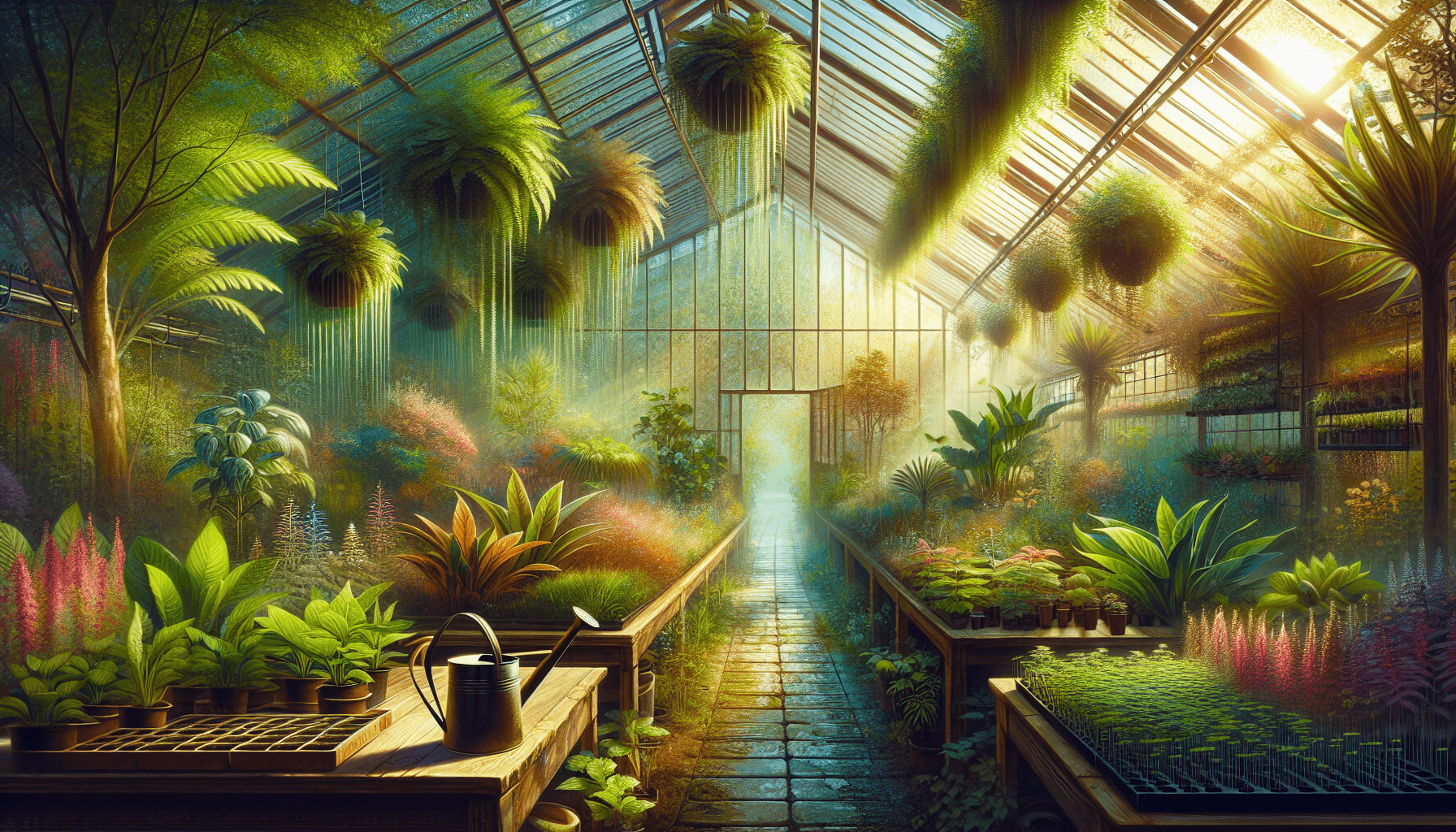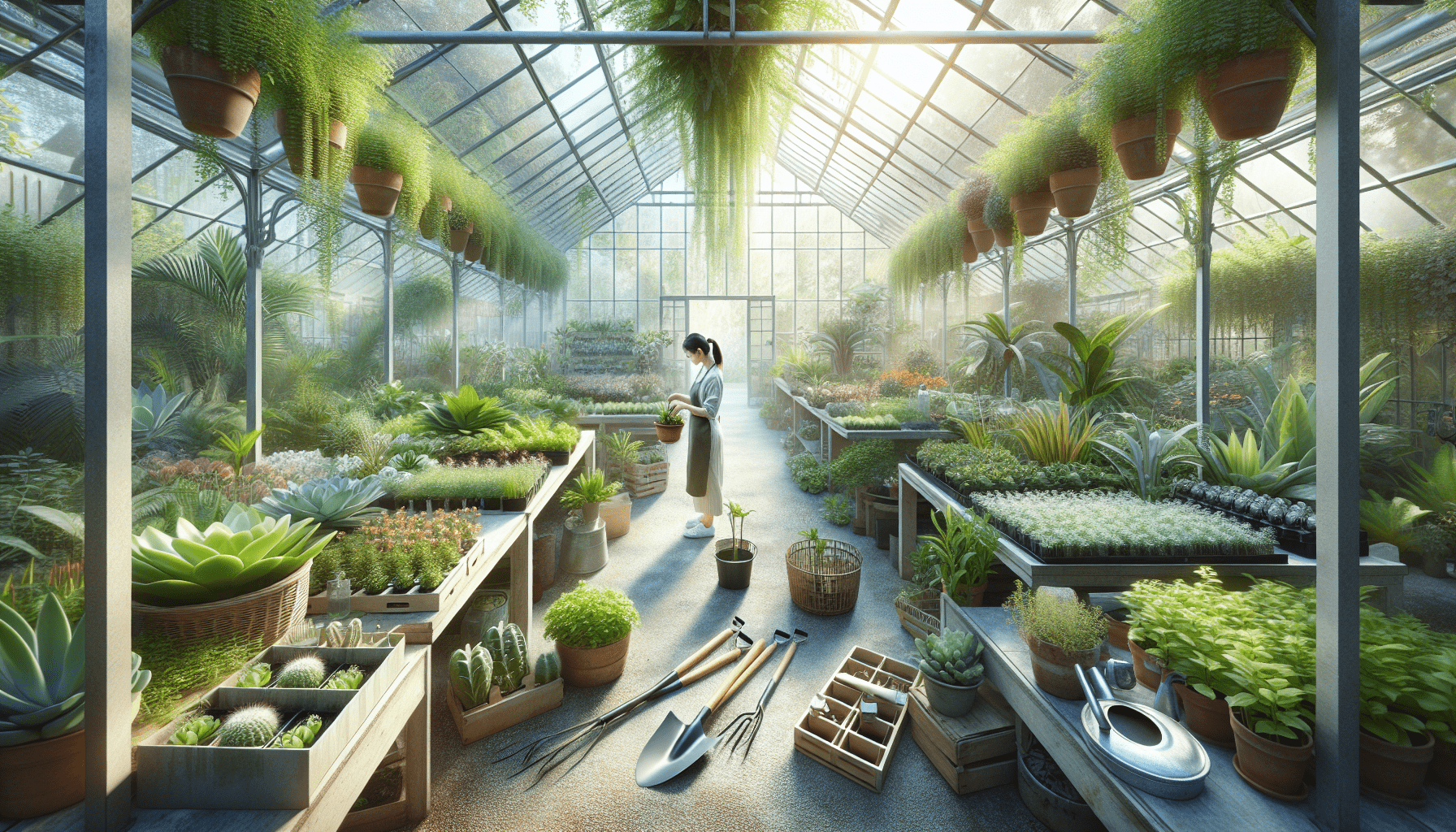
Embark on a fulfilling and rewarding journey as you explore the fascinating world of greenhouse gardening! “Essential Beginner Greenhouse Gardening Tips” offers a wealth of knowledge and practical skills that will empower you to effectively cultivate your own vibrant and nourishing plants. From understanding the basics of greenhouse structures, to mastering the nuances of plant care, this article is your guide to making the most out of your greenhouse gardening experience. Brace yourself for a beautiful journey filled with abundant greenery and new life, right at your fingertips.

Understanding the Basics of Greenhouse Gardening
Gardening in a greenhouse can be a fulfilling hobby and a great way to grow your own food. But where do you start? Here’s a quick guide.
What is a greenhouse and how does it work?
A greenhouse is a structure with walls and roof made out of transparent material, like glass or plastic, where plants are grown under controlled environmental conditions. Greenhouses work by letting in sunlight which warms up the interior. The structure then traps the heat, maintaining a warmer temperature inside, perfect for growing plants year-round.
Types of greenhouses available for beginners
Just starting as a greenhouse gardener? There are several types of greenhouses that are suitable for beginners. Starter or mini greenhouses are small and portable. Lean-to greenhouses are a great space-saver as they are designed to lean against a wall. There are also traditional freestanding greenhouses if space is not limited.
Benefits of gardening in a greenhouse
Greenhouse gardening offers a multitude of benefits. It allows you to grow plants that might not typically grow in your region. The controlled environment can also extend your growing season, providing fresh produce throughout the year. Plus, with fewer pests and diseases to worry about, your plants will be healthier and more productive.
Challenges faced by beginner greenhouse gardeners
While there are many advantages, greenhouse gardening also has its challenges. Learning how to properly control the temperature and humidity for different plants can be difficult. In addition, dealing with pests that get inside can be an issue, and maintaining the structure and systems of the greenhouse requires ongoing attention. But don’t worry, with a little patience, these challenges can be overcome!
Choosing the Right Location and Greenhouse
Location is an essential consideration when setting up your greenhouse.
Factors to consider when choosing a greenhouse location
When selecting a location for your greenhouse, consider exposure to sunlight, wind direction, and drain placement for excessive rainwater. It should ideally be placed where it can get maximum sunlight – south or southeast of buildings or trees. If this isn’t possible, west of the shade structure is the second-best placement.
Understanding the importance of sunlight exposure
Sunlight is an essential ingredient for healthy plant growth. However, too much intense sunlight can damage plants. Understanding the sun’s daily and seasonal patterns can help you position your greenhouse for optimal sunlight exposure.
Comparing different greenhouse structures and materials
When it comes to greenhouse structures, the common options are A-frame, dome, gothic (arched), lean-to, and Quonset. Your choice depends on your budget, space, and personal preference. As for materials, polycarbonate and polyethylene are popular for their affordability, durability, and heat retention abilities.
Ventilation requirements for optimal plant growth
Climate control is a critical aspect of greenhouse gardening. Most greenhouses need vents and fans to regulate temperature, maintain airflow, and keep humidity in check.
Setting Up Your Greenhouse
Once you’ve chosen a greenhouse and location, it’s time to set it up!
Essential tools and equipment for beginners
To start your greenhouse journey, you’ll need some basic tools: gardening gloves, a trowel, watering can, garden fork, rake, and pruners. A thermometer and a hygrometer, for temperature and humidity measurement, would also come in handy.
Installing heating and cooling systems
To maintain an optimal temperature in your greenhouse, you might need to install a heating system for colder days and a cooling system for the hot days. Don’t forget to pay attention to the units’ energy efficiency when picking one.
Ensuring proper ventilation and air circulation
Remember, plants need fresh air to thrive! Install a ventilation system to maintain air circulation and prevent excessive humidity, which can lead to plant diseases.
Lighting considerations for year-round gardening
For year-round gardening, additional grow lights might be needed. This is especially true in seasons with shorter daylight hours.
Soil and Water Management in Greenhouses
Great soil and water management practices are key to successful greenhouse gardening.
Choosing the right soil mix for greenhouse plants
The right soil mix provides nutrients and a good drainage system for your plants. A well-balanced mix of peat moss, perlite, and compost usually works best.
Implementing efficient watering practices
Watering your plants properly is crucial. Instead of watering a little each day, deeply water your pots so the soil is thoroughly wet. The top of the soil should be dry before watering again.
Understanding the importance of drainage
Good drainage is crucial to prevent waterlogged soil and root rot. Make sure your greenhouse has a good run-off system.
Managing pH levels and nutrients in the soil
Maintaining pH levels and nutrient content within optimal ranges is important for plant growth. Regular soil tests can help manage this.

Plant Selection and Seed Starting
Choosing the right plants and seeds plays a significant role in your success.
Identifying ideal plants for greenhouse cultivation
Not all plants are suitable for greenhouse cultivation. Start with vegetables like tomatoes, capsicums, and cucumbers, or herbs like basil, parsley, and dill.
Tips for successful seed starting in a greenhouse
When starting seeds, use a light, well-draining compost and ensure they’re warm enough. Once they sprout, ensure adequate light and don’t overwater.
Transitioning seedlings from indoors to a greenhouse
When moving your seedlings to the greenhouse, gradually expose them to the new environment to avoid shock.
Using propagation techniques for plant multiplication
Propagation techniques like cuttings, layering, and division can be used to multiply your greenhouse plantings.
Pest and Disease Management
Pests and diseases can be challenging, but there are methods to tackle them effectively.
Common pests in greenhouse gardening and control methods
Common greenhouse pests include aphids, spider mites, and whiteflies. Controlling them can involve natural predators, organic sprays, and good hygiene practices.
Preventing diseases in greenhouse crops
Preventing diseases includes keeping the environment clean, avoiding overcrowding of plants, appropriate watering, and regular inspections.
Biological pest control options for organic gardening
Biological control involves introducing natural predators of pests into your greenhouse—an excellent method for organic gardeners.
Routine inspections and maintenance for pest and disease prevention
Keep pests and diseases at bay by regularly checking plants for signs of trouble and addressing it promptly.
Temperature and Humidity Control
Controlling temperature and humidity is vital for successful greenhouse gardening.
Understanding the ideal temperature ranges for different plants
Each plant has different temperature needs, which you must take into account when adjusting your greenhouse’s temperature.
Managing humidity levels to prevent plant diseases
Too high or low humidity can cause issues like mold growth or stunted growth. Maintain the ideal range of 50-70%.
Using shade cloths and cooling systems during hot weather
Shade cloths can protect plants from intense sun, and a cooling system can keep temperatures in check during hot weather.
Winterizing your greenhouse for cold seasons
For winter, invest in an effective heating system. Insulate the greenhouse and keep drafts to a minimum.
Maximizing Space and Efficiency
With good strategies, you can get the most out of your greenhouse.
Vertical gardening techniques in a greenhouse
Vertical gardening, such as trellises and hanging pots, can help you maximize your greenhouse space.
Container gardening within the greenhouse
Using containers allows you to move plants as needed, maximizing efficiency.
Creating microclimates for diverse plant needs
Different areas of your greenhouse can cater to different plants’ needs, creating a variety of microclimates.
Strategies for year-round gardening and crop rotation
With a little planning, you can have fresh produce all-year-round. Crop rotation can also help keep the soil healthy.
Sustainability Practices in Greenhouse Gardening
Sustainability can be incorporated into greenhouse gardening with a few steps.
Utilizing rainwater harvesting for irrigation
Harvested rainwater can reduce your water bills and reliance on mains water supply.
Implementing solar panels for energy efficiency
Solar panels can supply energy to your greenhouse in a clean and sustainable way.
Composting organic waste for nutrient-rich soil
Composting turns your kitchen and garden waste into nourishing soil, closing the waste loop.
Choosing sustainable and biodegradable pots and planters
Avoid plastic waste by using pots made from biodegradable materials.
Maintaining Your Greenhouse
Keeping your greenhouse in top shape ensures your plants thrive.
Regular cleaning and disinfection routines
Regular cleaning prevents the build-up of pests and diseases. Regularly disinfect tools and surfaces.
Inspecting and repairing structures and equipment
Regularly inspect your greenhouse for any signs of damage or wear and promptly repair any issues.
Seasonal adjustments for optimal plant growth
Depending on the season, you might need to make adjustments to light, temperature, and humidity.
Record-keeping and monitoring plant progress
Keeping records of plant progress, pest or disease issues, and environmental conditions can help you learn and improve. Ready to start your greenhouse adventure? Happy gardening!

